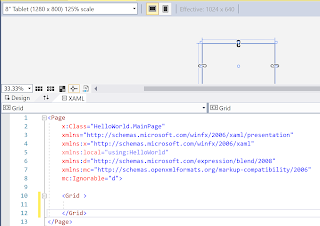Creating a database in SAP's Ultralite 17 - Part 2
Mobile apps without data are not very interesting especially for enterprise / business applications. Most businesses are data-centric. Ultralite databases with their small foot print are ideal for mobile applications. As described in the previous post you can use the APIs to create apps on many different devices.
In this post I describe the steps to create a database with all the default settings using the SQL Central interface. If you are new to SQL Central (was previously called Sybase Central) you may want to read my older posts here.
Launch SQL Central from All Programs under SQL Anywhere 17.
Click Tools and choose under UltraLite to create a database as shown.

Create_00.png
Creating a database is driven by the Wizard which appears as soon as you click Create Database... in the above window. The following sequence of windows shows how the database is created. Although you can make many changes to the database settings, all defaults are used in this post.
You start with the welcome window. Read the notes here.
Click Next,
Use the Browse... button to find the location for the database you are going to create and provide a name. Herein the name is Mar25_2017.
Click Next. Accept the default storage settings.
Click Next.
Next choose the Collation and character set. Herein Ultralite defaults are accepted.
Click Next.
Accept the default creation parameters. Have a look at what they are (these are Ultralite defaults).
You can change any or all of them.
Click Next.
You may leave this as is. Synchronization is important for synchronizing the UltraLite with the main server. For the moment you may leave this empty.
Click Next after placing a check mark for connecting to the new database. This makes the database available in the SQL Central Management interface.
Click Next. Oh! you get the command line way of creating this database. What the wizard delivered is the execution of the command line with the parameters (Switches) shown here. This is neat. Next time around you may just use the command line.
Click Close. The database is created and now appears in the SQL Central under Ultralite 17 (Compare this to the very first image in this post)
Here is the Properties page for this database. Presently it has objects such as Tables, Users etc.
In this post I describe the steps to create a database with all the default settings using the SQL Central interface. If you are new to SQL Central (was previously called Sybase Central) you may want to read my older posts here.
Launch SQL Central from All Programs under SQL Anywhere 17.
Click Tools and choose under UltraLite to create a database as shown.

Create_00.png
Creating a database is driven by the Wizard which appears as soon as you click Create Database... in the above window. The following sequence of windows shows how the database is created. Although you can make many changes to the database settings, all defaults are used in this post.
You start with the welcome window. Read the notes here.
Click Next,
Use the Browse... button to find the location for the database you are going to create and provide a name. Herein the name is Mar25_2017.
Click Next. Accept the default storage settings.
Click Next.
Next choose the Collation and character set. Herein Ultralite defaults are accepted.
Click Next.
Accept the default creation parameters. Have a look at what they are (these are Ultralite defaults).
You can change any or all of them.
Click Next.
You may leave this as is. Synchronization is important for synchronizing the UltraLite with the main server. For the moment you may leave this empty.
Click Next after placing a check mark for connecting to the new database. This makes the database available in the SQL Central Management interface.
Click Close. The database is created and now appears in the SQL Central under Ultralite 17 (Compare this to the very first image in this post)
Here is the Properties page for this database. Presently it has objects such as Tables, Users etc.












Comments